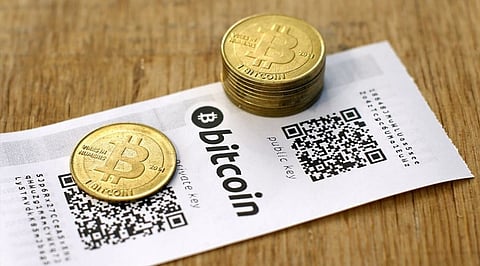
- Insights
- Cryptocurrencies
- Stocks
- White Papers
- Industry
- Geography
- Insights
- Cryptocurrencies
- Stocks
- White Papers
- Industry
- Geography


Physical wallets have traditionally been recognized as one of the most secure methods of storing bitcoins. It is not possible for an intruder to access your BTC if properly configured and follow specific measures. Paper wallets are a very safe solution to keep your bitcoins safe from hackers and malware. They can be created through crypto ATMs. For more information, follow this link, https://paydepot.com/de-bitcoin-atm.
This article will highlight the definition of paper wallets, how to transfer bitcoins to your paper wallet in a secure manner, and some important points to keep in mind.
Paper wallets are used for the offline storage of BTC. Bitcoin and the other forms of cryptocurrencies have no physical representation, unlike paper money. On the other hand, wallets utilized for retaining digital signatures are generally applications that make updating the blockchain ledger simpler.
Paper wallets are different from so-called active wallets in that they don't rely on the Internet to function. They do not, however, currently keep actual bitcoins. The quality of this wallet's role is mostly related to the access mechanisms employed by Bitcoin owners.
Ensure that you have the following three factors covered before sending bitcoins from your paper wallet:
• A stable and secure internet connection
• Software wallet account that you can trust
• 10 to 15 minutes to undertake the process (transaction times may vary and they often take more than initially promised)
Now that you have some background information, follow these steps to transfer BTC from your paper wallet.
Ensure that you have access to your paper wallet. A pair of public keys, represented by a lengthy string of numbers, letters, and matching letters, make up a Bitcoin paper wallet.
You may migrate your bitcoins from a paper wallet to a software wallet in one of two methods. Scan the given QR code or type in a series of letters and numbers by hand. A camera or webcam can scan a QR code, which may then be decrypted by presenting the public and private keys as different pictures.
Scanning a QR code is, of course, far easier than deciphering a series of characters or numbers. QR code scanning and viewing are built-in to many Bitcoin wallet clients and services. You can, however, download a separate QR code scanning software if your wallet is unable to scan QR codes. The program will save the scanned address to your device's clipboard, which you may then paste into the wallet application.
To verify the number of bitcoins in a paper wallet, first use the blockchain explorer service to scan, paste, or write down the paper wallet's address. Make sure you don't scan your private key. The paper wallet's current balance is now presented.
Import or Sweep can be used to import your private key into the software wallet client. You may now scan your private key's QR code in your paper wallet to receive or withdraw bitcoins from your paper wallet.
The above steps for sending bitcoins from a paper wallet may be outlined as follows:
1. Import the private key from your paper wallet and into the software wallet.
2. Use the software wallet to transmit bitcoins to the recipient's address.
Transferring bitcoins into a paper wallet is simple. You have to send it to the address on your paper wallet. However, sending them from a paper wallet can prove harmful if not done in the right manner. You can lose some or all of your bitcoins if you input or remove your private key incorrectly.
For your safety and a better experience overall, keep the following points in mind:
• It's a good idea to double-check whether all of the steps in the process were performed precisely. For example, if you're trading Bitcoin, you can track all of the stages on the blockchain to observe what occurs in real-time, such as when you get or transfer money.
• Keep your private keys safe at all times. Never give out a paper wallet's private key since it transfers bitcoins from the paper wallet. On the contrary, a public key can be shared with anybody, as it is used to send bitcoins to your paper wallet.
• Importing or sweeping BTC from a paper wallet may incur charges depending on the exchange you use.
• It is necessary to send the delivery as a separate online transaction. After that, the transaction is recorded in the blockchain, and the bitcoins delivered to the recipient's address are credited.
However, you also have the option of not sending all the bitcoins on the paper wallet. Some can be transmitted, while the remaining can be kept in your software wallet. Even if you spend a small portion of your bitcoins, your paper fund is depleted.
Nevertheless, you may go the extra mile and transmit the remaining value to your paper wallet (even if you wish to open a new wallet for security reasons). You may also transfer all of your bitcoins from your paper wallet to your software wallet without having to send anyone anything.
